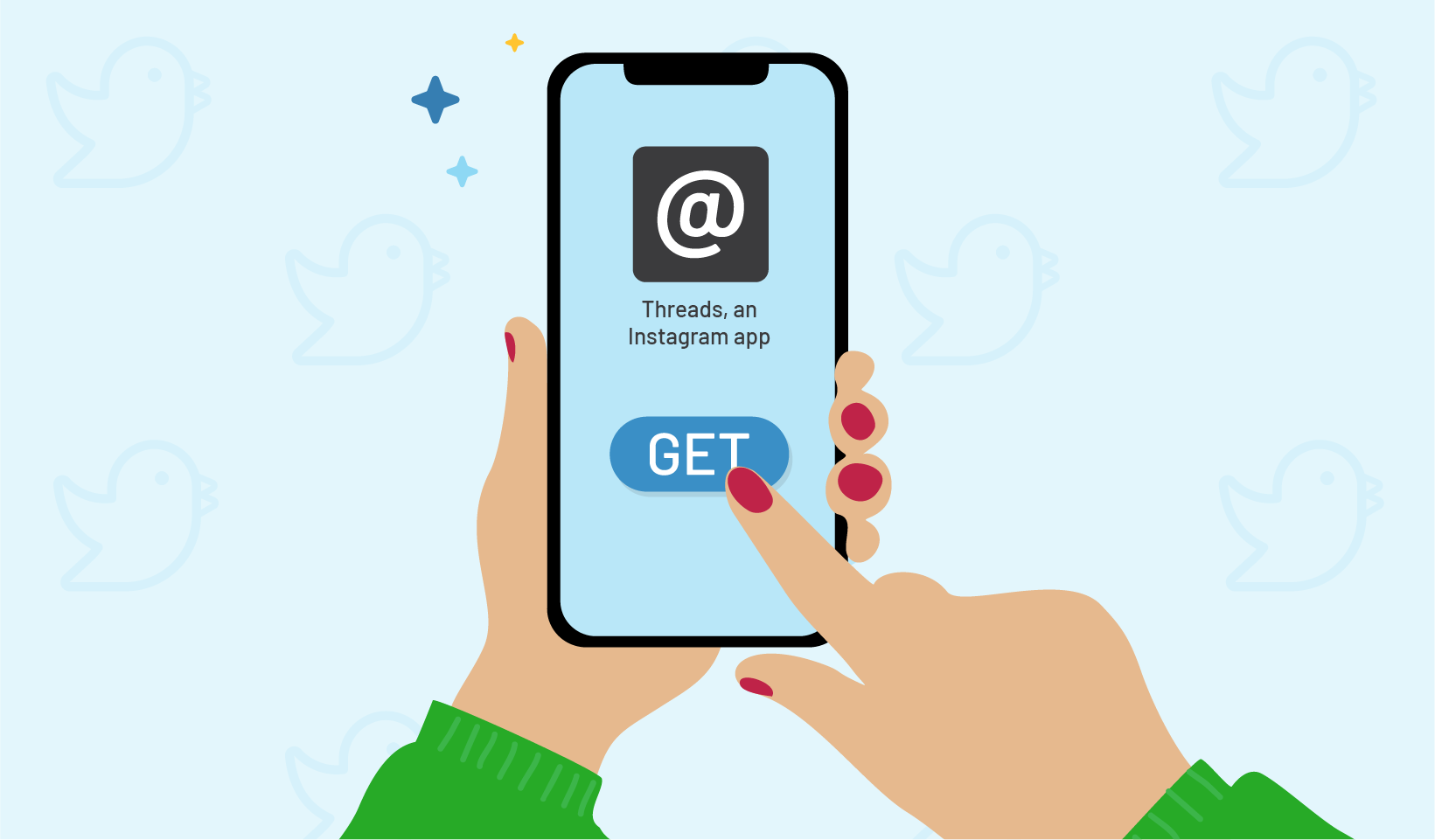-
Threads is a new Instagram app from Meta for sharing text updates
-
It’s Twitter’s newest, biggest competitor - 30 million users in under 24 hours after launch
-
There are concerns over Meta’s reputation and data privacy
What is Threads?
Threads is a text-based social media platform from Meta developed by the Instagram team. It’s essentially Twitter for Instagram. At the moment it’s a closed platform, available inside Instagram. But there are future plans to make Threads interoperable with other social networking platforms and websites.
What is the difference between Threads and Instagram?
Instagram is primarily a photo and video-sharing platform. Threads covers the text side of things. For users who want to share their ideas in writing. It’s not to replace photos and video. It’s to add and enhance the Instagram experience. On Instagram, sometimes people post photos, tokenistically, but the hero of the content is the caption. With Threads, Instagram is creating a space within its platform that’s purpose-built for sharing text.
So they’re competing with Twitter?
Essentially, yes. The same way that Reels was made to compete with TikTok.
Threads vs Twitter: what’s the difference?
Threads is intentionally more closed off than Twitter. It’s a separate app, but it feels like an in-app for Instagram. It’s self-contained by design. Threads doesn’t have the “soapbox/stranger yells upsetting tirades at passing-by strangers” reputation that Twitter unfortunately developed. There is no in-app messaging on Threads, unlike Twitter (and Instagram), so it’s a safer space than Twitter. Think of it like Twitter with more guardrails against upsetting or harmful content.
Most importantly, Threads is only available as an app on Android and iOS devices. It’s not currently available on web browsers, so you can’t access it with a desktop or laptop. Threads, for now, also doesn’t have any advertisements. But this will likely change as the platform matures and becomes more widely available.
How do you use Threads?
If you already have an Instagram account, it’s super simple. You log in with your existing credentials. You can import your profile and contacts from Instagram, then customize your profile, followers, and followees, as you see fit.
The functionality and UX are very similar to Instagram. So Instagram users will feel comfortable and familiar. There’s some interoperability. You can share a Threads post on your Instagram account. And you can share a link to your Threads post on any other platform. Navigating between Instagram and Threads is also simple. You can open the Threads app within Instagram, at the top right corner of the home screen.
What can you post on Threads?
Text posts on Threads can be up to 500 characters long. Posts can also include links, photos, and videos up to 5 minutes long.
How is Threads a threat to Twitter?
Twitter has been standing on shaky ground since Elon Musk took over in April 2022 and introduced some unpopular changes in policy and functionality. Twitter losing followers and its overall stranglehold on the internet has meant potential competitors are smelling blood in the water. Since Musk’s takeover, multiple Twitter competitors have either popped up or increased in popularity: Mastodon, Hive Social, Post, and Blue Sky are the prominent examples.
Threads is clearly the biggest threat because it’s from Meta, one of the biggest technology conglomerates in the world and the parent company of Facebook, Instagram, and WhatsApp. Whereas Mark Zuckerberg absorbed Instagram and WhatsApp, with Threads Meta has built a new platform to challenge Twitter.
In fact, Mark Zuckerberg tried to buy Twitter in 2008. So he’s had his eye on the platform for some time. With a new app and the decade-plus learnings of being the tech giant they are, Meta has the data, scalability, and resources to overthrow Twitter as a platform. As such Threads has been nicknamed the “Twitter killer” by members of the tech community
Threads also looks and feels like Twitter. It’s essentially Twitter with an Instagram skin. And that hasn’t gone unnoticed. Twitter reportedly issued a letter accusing Meta of hiring former Twitter employees and leveraging trade secrets to build Threads. Meta has rebuked this claim.
The similarities between Twitter and Threads are clear, as are their differences. But what’s key, is it’s backed up by users, which is the biggest threat to Twitter. Since Meta already has more than 3 billion users across Facebook, Instagram, and WhatsApp, and you can carry your Instagram account over, it’s easy and convenient to start an account. This saw Threads gain 30 million users in under 24 hours. This blows the number of total users of Mastodon and other competitors out of the water.
What is wrong with Threads?
It’s a new platform, and as such it’s still forming its digital identity. The content posted on there doesn’t blow your mind. It feels like a duplicate of what you’d find on Instagram. Many users are figuring it out, so a lot of the content feels experimental and, “What am I doing here?”
Posts aren’t as immediate on Threads. So at the moment, it’s not a suitable forum for breaking news. Shortcomings like this are likely to change soon.
One of the biggest criticisms of Threads is over privacy concerns. It hasn’t yet launched in Europe because of questions regarding unlawful data sharing.
Perhaps the biggest threat to Threads is whether or not it succeeds at its mission of being a safer and better alternative to Twitter. Rather than being the “Twitter killer”, it could just be the Twitter heir apparent, inheriting everything, the good and the bad. As humanity has shown, it can turn any internet platform into an unsafe and hostile environment.
Meta also has its own list of failures. Their attempts to compete with Snapchat and TikTok haven’t seen them beat those platforms. With Meta’s overall brand constantly facing backlash, Threads could very well be another scratch in the L column, rather than the big W Mark Zuckerberg is hoping for.


